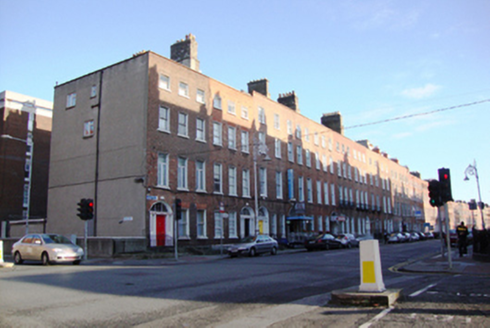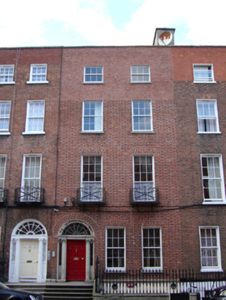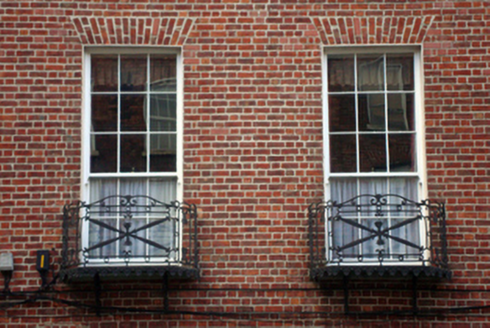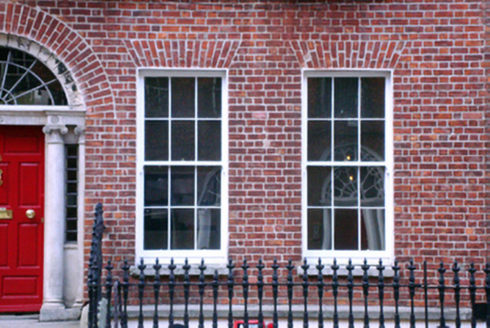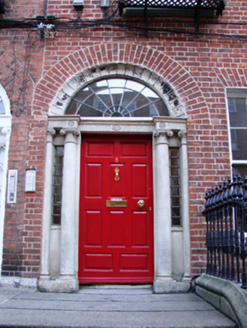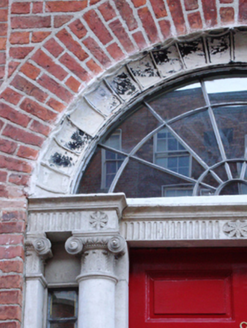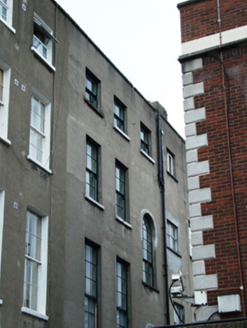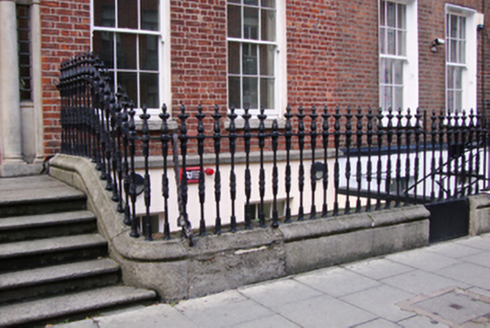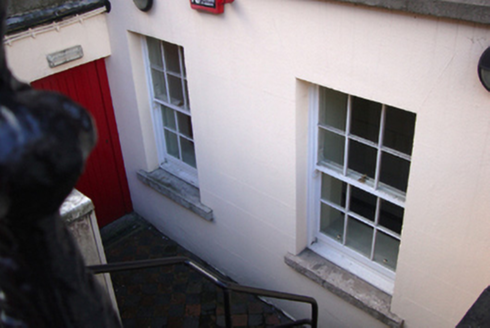Survey Data
Reg No
50010866
Rating
Regional
Categories of Special Interest
Architectural, Artistic
Original Use
House
In Use As
Apartment/flat (converted)
Date
1780 - 1800
Coordinates
315876, 235392
Date Recorded
10/10/2011
Date Updated
--/--/--
Description
Terraced four-storey house over exposed basement, built c.1790, with three-bay ground floor and two-bay upper floors. Now in multiple occupancy. M-profile pitched roof hipped to west with two cement rendered chimneys having terracotta pots shared on party wall with No. 9 to east behind granite-capped parapet. Red brick wall laid in Flemish bond with replacement brick to third floor laid in English bond to granite plinth course over ruled-and-lined rendered painted basement. Gauged brick square-headed window openings with painted patent reveals and granite sills throughout. Replacement six-over-six pane timber sliding sash windows with ogee horns to ground second and basement levels, nine-over-six pane to first floor, and three-over-three pane to top floor. Decorative cast-iron balconettes to first floor windows. Gauged brick segmental-headed recessed door opening with concave fluted moulded archivolt and Portland stone Ionic doorcase with engaged columns and responding pilasters flanking narrow replacement sidelights. Stepped lintel cornice with fluting and paterae enrichment supporting replacement spoked fanlight. Original ten-panel timber 'Dublin' door opens onto granite platform and five granite steps shared with No. 7 to west and flanked by decorative bulbous cast-iron railings on ornate moulded granite plinth curving to east to enclose basement area accessed by matching gate and concrete steps. Sheeted painted timber door under platform to basement. Ruled-and-lined cement rendered rear elevation with replacement timber sliding sash windows having same arrangement as front elevation, and having round-headed nine-over-six pane stair window. Concrete paved path with granite kerbing and two coal hole covers set in granite slabs.
Appraisal
No. 8 forms part of a terrace of former townhouses on the north side of Gardiner Place. Recently restored to a good standard, with carefully detailed reproduction windows and lime re-pointing, the house adds considerable architectural heritage merit to this fine and substantially intact streetscape. The terrace lines one of the longest vistas in the city, which terminates to the west with Findlater's Church and to the east with a pair of houses on Mountjoy Square East. This house has a fine classical doorcase which provides a decorative focus. The retention of timber sash windows contributes to the historic architectural character of the building. The retention of the granite entrance landing and steps, and of the stone plinth wall and iron railings and gate to the basement area completes the setting. The house is a significant component in an important Georgian terrace and the whole contributes to the strong historic architectural character of this district. Gardiner Place was developed by Luke Gardiner II, in c.1790, as an extension of Gardiner's Row in order to link Parnell Square with the new and fashionable Mountjoy Square. Although built as a residential street, Gardiner Place was largely inhabited by legal professionals and doctors in the mid nineteenth century, and as tenements, social housing and guest housing in the twentieth century.
